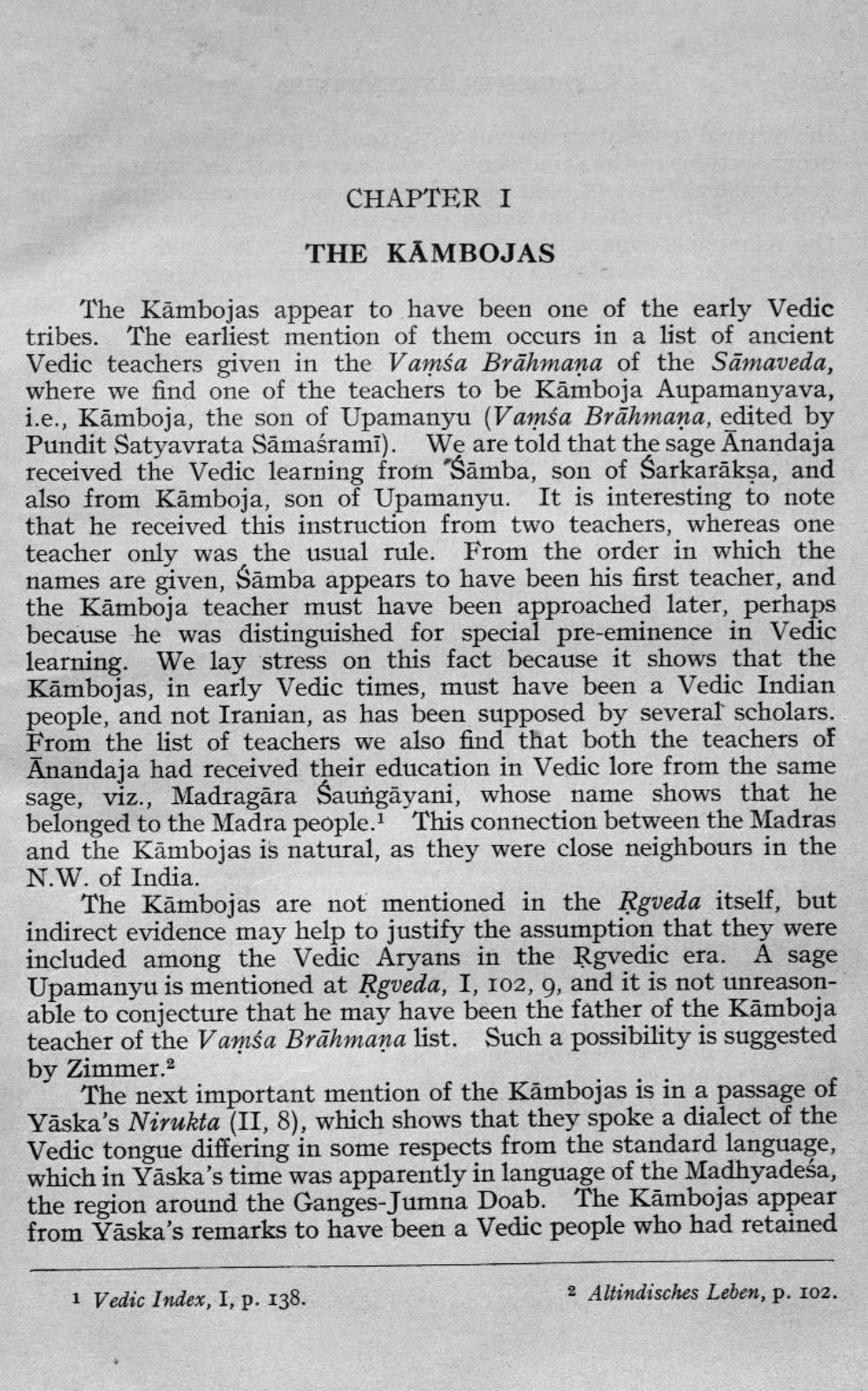________________
CHAPTER I
THE KAMBOJAS
The Kāmbojas appear to have been one of the early Vedic tribes. The earliest mention of them occurs in a list of ancient Vedic teachers given in the Vamśa Brāhmaṇa of the Sāmaveda, where we find one of the teachers to be Kāmboja Aupamanyava, i.e., Kāmboja, the son of Upamanyu (Vamśa Brāhmaṇa, edited by Pundit Satyavrata Sāmaśramī). We are told that the sage Anandaja received the Vedic learning from Śāmba, son of Sarkarāksa, and also from Kāmboja, son of Upamanyu. It is interesting to note that he received this instruction from two teachers, whereas one teacher only was the usual rule. From the order in which the names are given, Sāmba appears to have been his first teacher, and the Kāmboja teacher must have been approached later, perhaps because he was distinguished for special pre-eminence in Vedic learning. We lay stress on this fact because it shows that the Kāmbojas, in early Vedic times, must have been a Vedic Indian people, and not Iranian, as has been supposed by several scholars. From the list of teachers we also find that both the teachers of Anandaja had received their education in Vedic lore from the same sage, viz., Madragāra Saungāyani, whose name shows that he belonged to the Madra people. I This connection between the Madras and the Kāmbojas is natural, as they were close neighbours in the N.W. of India.
The Kāmbojas are not mentioned in the Rgveda itself, but indirect evidence may help to justify the assumption that they were included among the Vedic Aryans in the Rgvedic era. A sage Upamanyu is mentioned at ægveda, I, 102, 9, and it is not unreasonable to conjecture that he may have been the father of the Kāmboja teacher of the Vamśa Brāhmana list. Such a possibility is suggested by Zimmer.2
The next important mention of the Kāmbojas is in a passage of Yāska's Nirukta (II, 8), which shows that they spoke a dialect of the Vedic tongue differing in some respects from the standard language, which in Yaska's time was apparently in language of the Madhyadeśa, the region around the Ganges-Jumna Doab. The Kāmbojas appear from Yāska's remarks to have been a Vedic people who had retained
1 Vedic Index, I, p. 138.
2 Altindisches Leben, p. 102.




